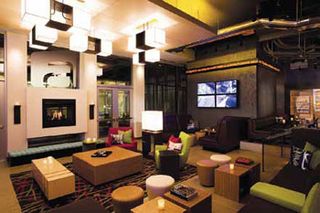Why Cloud-Delivered, Open Source Digital Signage?
I used to argue that digital signage should be delivered as a software service (SaaS) because of its cost-effectiveness and simplicity. But I soon realized that I wasn’t taking my own advice.
I did deliver digital signage as a software service, but the way I was doing it wasn’t cost-effective or simple for me. Everything that we did relied upon servers, operating systems, databases, firewalls, security, virus protection, networks, access points, bandwidth, etc., and we maintained and operated it all. And on top of that we built everything that ran on top of it, had to develop every customization and tweak that was requested, and what a logistics nightmare if we wanted to integrate third-party apps or content into our application. And if all of that wasn’t bad enough we also thought that we had to keep it all close to the chest and proprietary to protect our competitive advantage. Yup, we talked the talk but we sure didn’t walk the walk.
I finally took my own advice and changed all of that. I shut down over 30 servers, moved everything we use to the cloud — everything — we don’t have one single server left that we maintain — and watch me scream if you send me something that I can’t run in a browser on any Windows, Mac, or Linux computer. We went completely virtual, including moving our application development and delivery to the Google App Engine. On top of that, we purposefully split the development of our new digital signage app in two. One team focused on the server and an API and the second team uses that API to create the user interface and display player that ran on top of that server. When it comes to our API’s, we eat our own dog food (the process of using what you sell yourself).
We went further and adopted an environment that anyone could add display content to through the use of Google Gadgets and we made the Gadget, user interface, and display player applications open source. Anyone can take our open source code and use it to build their own specialized apps to run on our server if they want to. Why?

Aloft Hotels drives their digital signage content from a SaaS systems provided by RiseVision.
Focus and simplicity. We only worry about one thing now: the product. Everyone’s job is the product. There is no such thing as back office or overhead positions. We (development, QA, support, marketing, sales) are all on the front line, focused on our partners and the product. And the interesting addon benefit is the elimination of the overhead required to facilitate front-line communications to the back office of what the customer wants. If everyone faces the customer (say through online forums such as Get Satisfaction) then everyone gets the problem. The solver of the issue is right in the room when the customer brings up the concern.
Efficiency. We lowered our annual operating cost by one million dollars. And our output today is exponentially greater than it was when we were spending that million dollars. We didn’t cut costs and do less, we cut costs and did more. How did we do it? We had one person devoted to IT and we were so swamped that we were just about to hire another. Instead we moved to Google Apps and shut down our MS Exchange, Sharepoint, Blackberry, and file servers, and we moved that one IT person in to support as they ran out of things to do. We then adopted the Google App Engine as our application delivery service, took on Java, and used the Google Web Toolkit. Total cost: $0. Before we were spending tens of thousands of dollars on Visual Studio, MS SQL, MS Software Developer Network Subscriptions, licenses, and annual support. We did similar things with our CRM, accounting, and communication infrastructures — all resulting in even greater savings.
Predictability. Today, we know to the fraction of a penny what it costs us to serve content to every client’s display. We built the software, tested it on the Google App Engine service, and from the App Engine dashboard we know exactly what each display costs us, and we can check and monitor it in real time. We now have a truly variable cost per display served, which makes it easy for us to provide the most competitive price possible. Prior to this change we had to invest in server farms, software, bandwidth, etc., and we would have to try to predict what level of volume that investment and ongoing operating cost could provide for. Problem was that predicting volume and capacity is not an exact science, and the range of volume that you might acquire and the capacity you can handle are just best guesses.
Predictability. Today, we know to the fraction of a penny what it costs us to serve content to every client’s display. We built the software, tested it on the Google App Engine service, and from the App Engine dashboard we know exactly what each display costs us, and we can check and monitor it in real time. We now have a truly variable cost per display served, which makes it easy for us to provide the most competitive price possible. Prior to this change we had to invest in server farms, software, bandwidth, etc., and we would have to try to predict what level of volume that investment and ongoing operating cost could provide for. Problem was that predicting volume and capacity is not an exact science, and the range of volume that you might acquire and the capacity you can handle are just best guesses.
Convergence. Digital signage is about conveying a message — a call to action to the intended audience. For that message to be effective, it has to be consistent across all displays that the audience can engage with all day long. This includes the viewer’s browser on the computing platform of their choice, their phone and their TV, which is quickly becoming Web TV — the convergence of the message across all of these display types is the goal. If our message, our call to action, resides on digital signage, and in order for that message to be supported and continuously reinforced on our browser, our phone and our TV, then the emerging common ground between all of these displays is the web. This means that if digital signage is to move from being an island onto itself and further leverage display convergence, then it must meet the intended targets where they reside and with content they understand — the web and HTML.
Scalability. Our service is available globally. We reside on the largest network this planet has ever seen — Google. If we luck out and someone decides to add 10,000 displays today in the remote corners of the world, I don’t have to lie awake at night stressing about whether we can handle it or not. Google just automatically allocates a few more cycles and a bit more bandwidth to us, all without me losing one wink of sleep.
Leverage. Two versions of a display player, a bunch of crazy HTML presentations, a number of content gadgets, and one specialized app for adding images have all been added by third parties to date, and we haven’t even left beta with the new product. How did we do it? We didn’t actually, others did. We didn’t do anything to make this happen other than open source our code, document it, and publish all of it on a public project site. By providing an open source platform, there isn’t a digital signage project that we ever have to say no to. Instead we can tell the person requesting that it is beyond the scope of the platform we provide, but check the open source code and API and you can add it on your own.
This has benefits for both us and the providers of these additions. How? For us, we stay focused on what we do best. We make the platform better and better for others to take and create specialized applications if and when they need them in shorter and shorter periods of time. For the provider of the service, they have the opportunity to add the value of their market knowledge to the product. They can create truly unique stories and provide the service to their intended targets in such a specialized and unique way that they can do so without competition and without becoming a “me too” commodity.
Mash. We or our customers can take the best of what resides on the web and mash it into our application and content in a fraction of the time it used to take, if it could be done at all. There is almost nothing that can’t be integrated and leveraged.
Price. For all of the above reasons we can deliver a product at a fraction of the cost that we used to incur, and for that reason we can offer the service for the most competitive price available. Heck, we even took it further than that and offered a “freemium” model.
Go cloud, go open, put API’s on everything, and let your clients, resellers, partners, and content providers extend your application in ways that you never imagined possible.
Byron Darlison is “a lifetime entrepreneur who likes to get up early, drink espresso, think, and make things. I don’t like meetings, offices or dishonesty. And yes, I do digital signage as a service from the cloud and I am becoming open source obsessive. If you’re so inclined you can follow my personal ramblings on Twitter @ byrondarlison and my digital signage thoughts @risevision.”










